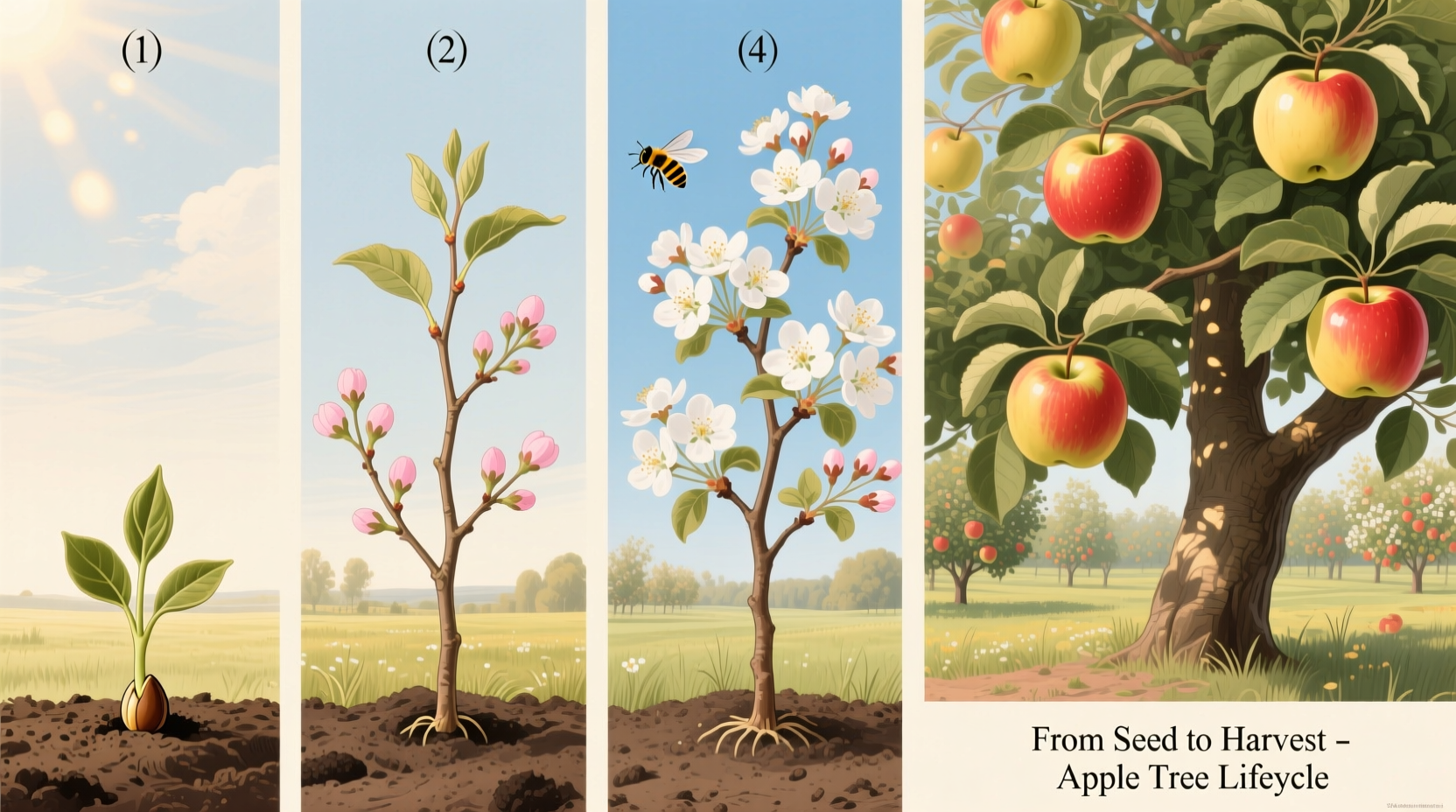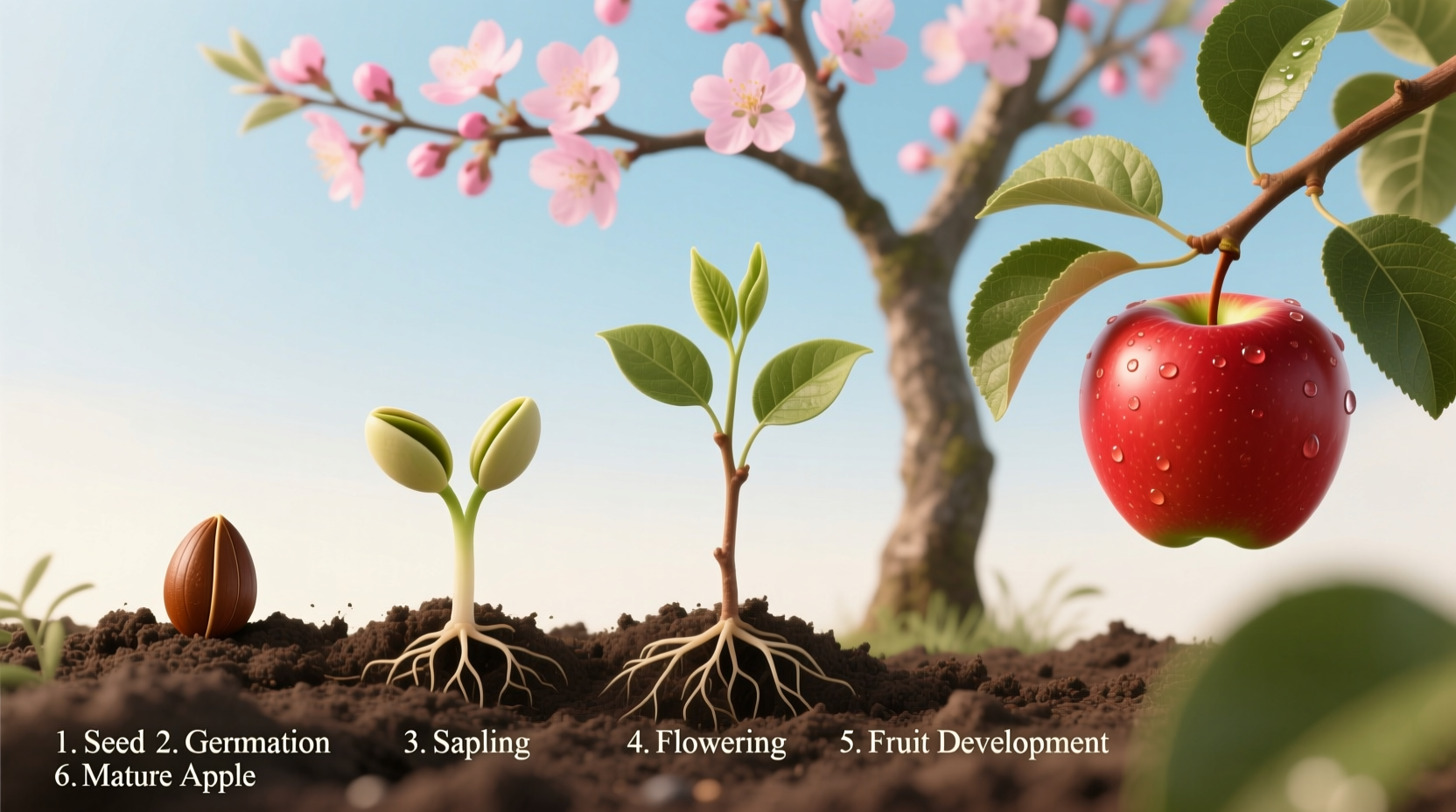What You'll Actually Learn About Apple Growth From Seed
If you've ever wondered whether planting an apple seed will give you the same delicious fruit you just ate, here's the reality: it won't. Most apples grown from seeds produce inferior or completely different fruit than their parent. This comprehensive guide explains exactly what happens when you grow an apple tree from seed to fruit, complete with realistic timelines, scientific explanations, and practical advice for gardeners who still want to try.
The Seed-to-Fruit Reality Check
Before you plant that apple seed, understand that apple trees grown from seeds rarely produce edible fruit comparable to store-bought varieties. This isn't just gardening folklore—it's basic apple genetics. Apples exhibit extreme heterozygosity, meaning seeds contain a unique genetic combination different from both parent trees. In fact, the USDA reports that fewer than 1 in 10,000 seed-grown apple trees produce fruit worthy of commercial cultivation.
Commercial orchards universally use grafting because it preserves the exact genetic characteristics of desirable varieties. When you bite into a Honeycrisp or Gala apple, you're tasting a clone of the original tree discovered decades ago—never a seedling.
Apple Growth Timeline: From Seed to First Harvest
| Growth Stage | Timeframe | Key Characteristics |
|---|---|---|
| Seed Stratification | 60-90 days cold treatment | Requires moist chilling to break dormancy |
| Germination | 2-6 weeks after planting | First roots and shoots emerge |
| Seedling Establishment | 1-2 years | Rapid root development, vulnerable to pests |
| Vegetative Growth | 2-5 years | Focus on trunk and branch development |
| Transition to Maturity | 5-8 years | First flower buds form |
| First Fruit Production | 6-10 years | Initial harvest (often inferior quality) |
Why Apple Seeds Play Genetic Roulette
Unlike many plants, apple trees require cross-pollination from a genetically different variety to produce fruit. This means the seed inside your apple contains DNA from two distinct parent trees. According to Cornell University's horticulture department, this genetic diversity explains why "seedling apples" often taste sour, bitter, or otherwise unpalatable compared to cultivated varieties.
The juvenile phase of apple trees—the period before they can flower—lasts significantly longer for seedlings than grafted trees. While grafted trees enter production in 2-4 years, seedlings must complete their full developmental sequence, which takes substantially longer. This biological reality makes seed propagation impractical for commercial production but fascinating for botanical experimentation.

Practical Guide to Growing Apples From Seed (If You're Determined)
Despite the challenges, growing apples from seed can be a rewarding educational project. Here's how to maximize your chances:
Step 1: Proper Seed Preparation
Apple seeds require cold stratification—mimicking winter conditions—to germinate. Place cleaned seeds in moist paper towels inside sealed containers in your refrigerator for 60-90 days. The University of Minnesota Extension confirms this process breaks seed dormancy by triggering biochemical changes.
Step 2: Planting and Early Care
Plant stratified seeds 1/2 inch deep in well-draining soil. Keep consistently moist but not waterlogged. Seedlings need at least 6 hours of direct sunlight daily. Protect from rodents—their small size makes them vulnerable during the first growing season.
Step 3: Managing Expectations Through Years 1-5
During these early years, focus on developing a strong root system and trunk. Water deeply but infrequently to encourage deep root growth. Avoid excessive fertilization, which can produce weak, fast-growing wood prone to disease. Most seedling trees won't show flower buds until year 5 or later.
Step 4: When (and Why) to Consider Grafting
If your seedling reaches 1/4 inch in diameter (typically year 2-3), you can graft a known variety onto it. This combines the seedling's hardy rootstock with the desirable fruiting characteristics of a named variety. The USDA Agricultural Research Service notes that grafting onto established rootstocks can reduce time to first harvest by 3-5 years compared to growing from seed alone.
Why Understanding This Process Matters
While growing apples from seed isn't practical for reliable fruit production, the process reveals fascinating botanical principles. Apple genetic diversity preserved through seed propagation has allowed the species to adapt to changing environments over millennia. Many heirloom varieties originated as chance seedlings that proved valuable. Understanding this complete growth cycle connects us to centuries of horticultural knowledge and explains why modern apple cultivation relies on grafting rather than seeds.
Frequently Asked Questions
How long does it take for an apple seed to produce fruit?
Apple trees grown from seed typically take 6-10 years to produce their first fruit. This compares to 2-4 years for grafted trees. The extended timeline occurs because seedlings must complete their full juvenile phase before becoming reproductively mature.
Will an apple tree grown from seed produce the same fruit as the parent apple?
Almost never. Due to apple trees' extreme heterozygosity, seed-grown trees produce fruit that differs significantly from the parent. Commercial varieties are always propagated through grafting to maintain consistent characteristics. Only about 1 in 10,000 seedling apples has commercially viable quality.
Can I grow an apple tree indoors from seed?
You can start apple seeds indoors for the first year, but long-term indoor growth isn't practical. Apple trees require winter chilling, full sun exposure, and substantial root space that indoor environments can't provide. After the first growing season, seedlings should be transplanted outdoors to develop properly.
Why do commercial orchards use grafting instead of seeds?
Grafting preserves the exact genetic characteristics of desirable apple varieties. Since seed-grown trees produce unpredictable fruit, grafting allows orchards to maintain consistent quality, flavor, and harvest timing. Grafted trees also enter production years earlier than seedlings, making commercial operations economically viable.











 浙公网安备
33010002000092号
浙公网安备
33010002000092号 浙B2-20120091-4
浙B2-20120091-4